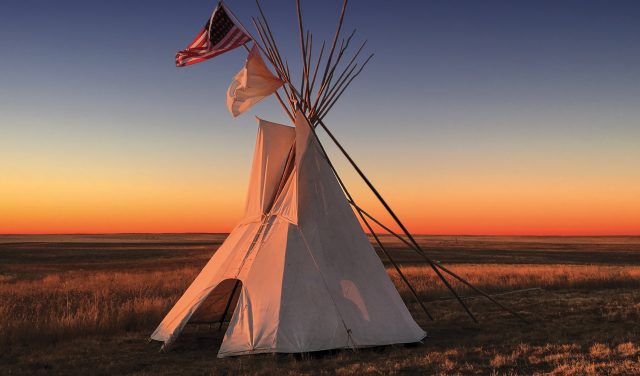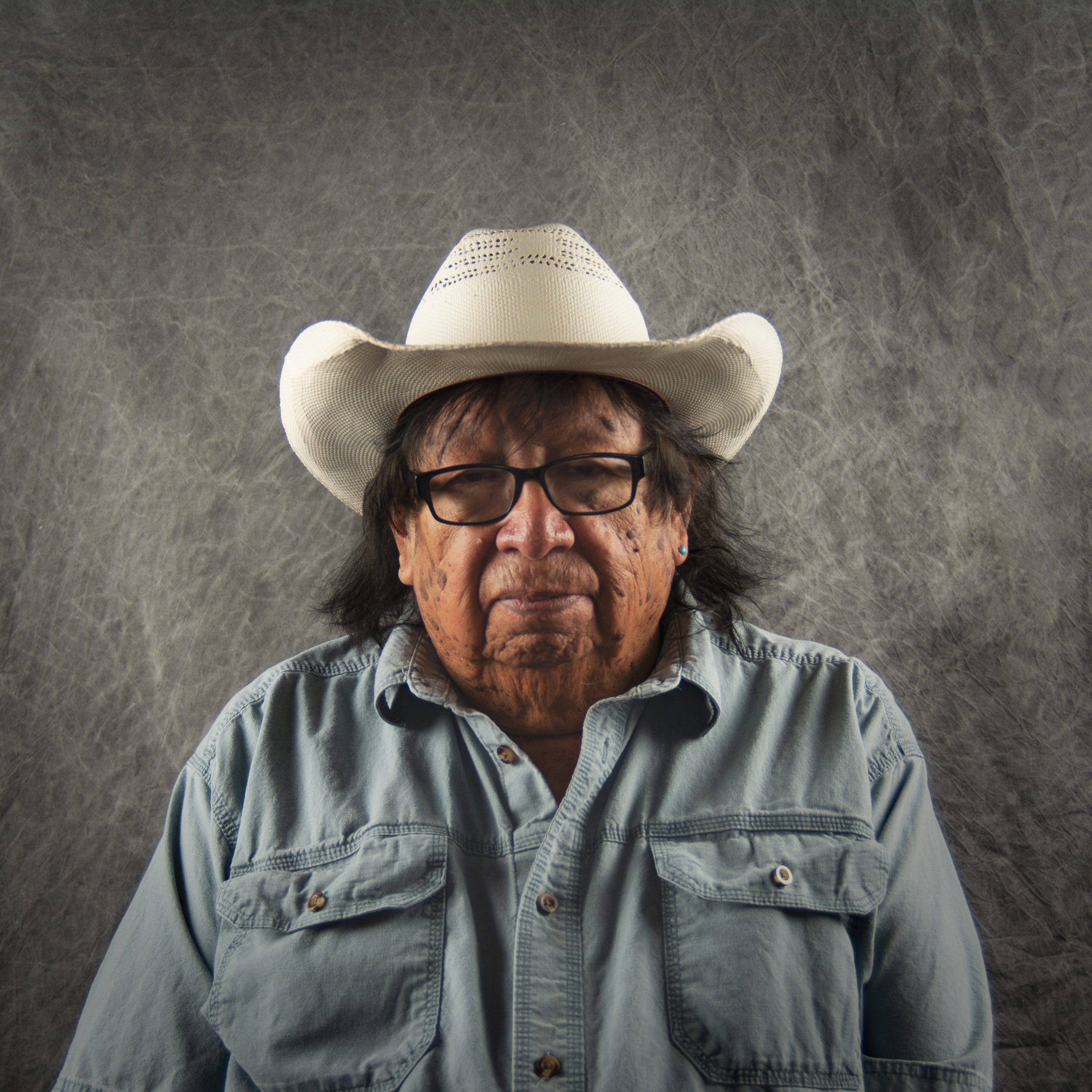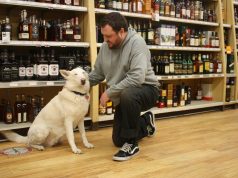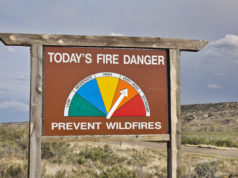
The Centennial State was born in bloodshed. On a cold morning in late November during the run-up to Colorado statehood, more than 230 women, children and elders of the Cheyenne and Arapaho tribes were killed near Fort Lyon in a surprise attack by the United States military. The slaughter was part of a broader campaign to carve a new map as white settlers pushed into tribal homelands throughout the American West.
“Colorado isn’t an accident. It didn’t just appear out of thin air,” says Sam Bock, public historian and exhibit developer at History Colorado, where a new gallery show on the Sand Creek Massacre opens Nov. 19 at the state-run historical society’s flagship Denver museum. “There was a historical process by which the state came to be, and the early part of that process, unfortunately, involves the extremely violent removal of Native people.”
This ethnic cleansing was a national project, but it was brutally expressed that fall morning in 1864 along Big Sandy Creek on the southeastern plains of Colorado. That’s where non-combatant Cheyenne and Arapaho citizens had gathered under the false promise of safety while an illusive peace deal was brokered among tribal and military leaders in Denver. Cheyenne Chief Black Kettle was instructed to fly a white flag beneath the Stars and Stripes, a peacekeeping gesture to ward off American aggression, outside the encampment that would become the site of the deadliest day in Colorado history and one of the bloodiest massacres in the so-called Indian Wars.
“Our people were butchered. They were butchered,” says Northern Arapaho citizen Gail Ridgely, whose ancestor Lame Man was among the survivors. “Babies were cut out of their mothers. It was devastating — horrific.”
Despite the ghastliness of the atrocity and the rich tribal traditions preceding and surviving it, today there’s little evidence in Colorado of its once-thriving Indigenous nations that have since been scattered across Oklahoma, Wyoming and Montana. Aside from a cluster of street names in Front Range cities like Denver and Boulder, if the violence hadn’t touched your family’s life like it did Ridgely’s, you might not know the Cheyenne and Arapaho were ever here.
That’s part of what the new History Colorado Center exhibition seeks to rectify. But the road to this historical reckoning hasn’t been a straight one for the nonprofit division of the Colorado Department of Higher Education. The center’s first gallery exhibition on the Sand Creek Massacre was shuttered not long after its debut in April of 2012.
“The main criticism was that it was not done in consultation with the tribes,” says Shannon Voirol, director of exhibit planning. “They wanted to be part of the conversation and share their perspective, and at that point, History Colorado hadn’t done that.”
From his home on the Wind River Indian Reservation in Wyoming, Ridgely notes historical inaccuracies in the original Sand Creek Massacre exhibition and says the institution “put the cart before the horse” by not consulting tribal representatives. For the 72-year-old Northern Arapaho citizen and many other Indigenous people, it’s a familiar grievance connected to a larger erasure of Native histories and traditions in North America.
“The Cheyenne and Arapaho tribes have pride in our language, our culture, our heritage and our ceremonies. Each of us is unique,” he says. “But the history has been distorted since 1492. … Our people don’t want to be portrayed as a fairy tale.”

The long arc of history
History Colorado Center’s inaugural Sand Creek Massacre exhibition closed in June of 2013. Tribal consultation for a new display began soon after, with Cheyenne and Arapaho representatives — including Ridgely — meeting with History Colorado leadership to discuss a path forward.
“The purpose of the consultation was to begin addressing concerns from the tribes regarding the exhibit, and to develop a plan together for the future relations between History Colorado and the tribes,” Ridgely says. “We all agreed these were encouraging and productive meetings.”
From there, Bock says History Colorado put tribal citizens behind the wheel as the new Sand Creek Massacre exhibition came slowly into view over the following years. He describes the frequent consultations as a mutually beneficial partnership that strengthened the quality of the resulting gallery show while honoring the true story of the long-misunderstood atrocity of 1864.
“The tribal representatives really drove a lot of this process. Many of them are descendants of the survivors and victims of the Sand Creek Massacre, so they were really the experts in the story,” Bock says. “We were the ones bringing the knowledge of how to turn those histories into an exhibit.”
When it came to translating this tragic and sacred story into a curated display, tribal members like Ridgely had no shortage of suggestions for framing an accurate and respectful narrative of the massacre and its victims. Among them was the idea that the exhibition should take care to depict life among the tribes before settler-colonial violence destroyed many of their proud and time-honored traditions.
“One thing we heard loud and clear from the Cheyenne and Arapaho tribal reps is that they wanted the exhibit to begin before the massacre,” Voirol says. “They wanted it to show the richness of their lives: the civility, the deep trade relationships and all those kinds of things from before the violence started. And so that is where the exhibit begins — Cheyenne and Arapaho lives, before the massacre.”
To that end, visitors to History Colorado Center’s new Sand Creek Massacre exhibition can expect a panoramic view of tribal life contextualized through everyday objects, artworks and historical photographs. The long-awaited gallery show also includes extensive oral histories by late Cheyenne and Arapaho elders, along with video of contemporary tribal citizens discussing what the massacre means to them today. One thing museumgoers won’t find is artifacts from the day or site of the killings, which are far from a distant memory for many living descendants.
“The Sand Creek Massacre isn’t just a piece of history that happened a long time ago,” Bock says. “It’s a very real, current family history for many of the tribal representatives we worked with and many of the tribal members we’ve spoken to. It continues to have enduring impacts in the tribal communities today.”
Ultimately for Ridgely, whose family story became intertwined with the unspeakable violence of late November 1864, the new Sand Creek Massacre exhibition is about more than setting the record straight. It’s also an opportunity to suture old wounds and forge a better future for Native people in the United States and beyond.
“It’s about historical remembrance, educational awareness and spiritual healing,” he says. “And the healing goes on.”
ON VIEW: The Sand Creek Massacre: The Betrayal that Changed Cheyenne and Arapaho People Forever. Opens Saturday, Nov. 19, History Center Colorado, 1200 N. Broadway, Denver. Tickets here.














